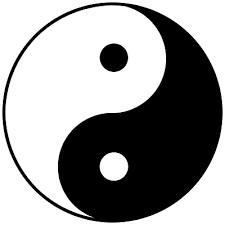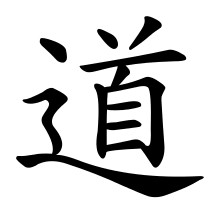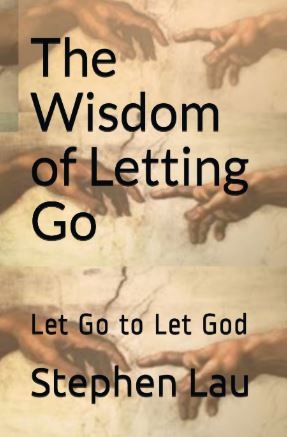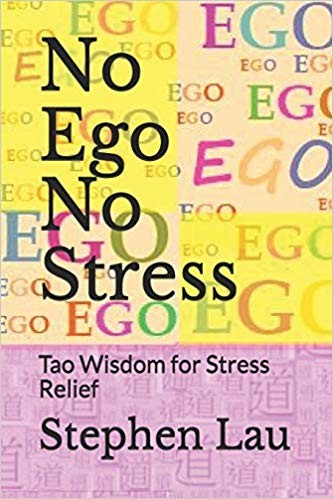



The TAO in Everyday Life


STEPHEN LAU




The TAO is in every aspect of life: growing up; receiving education; seeking careers; getting married; raising children; connecting with others; staying healthy; growing old; and facing life challenges.

THE WISDOM OF LETTING GO
All About . . . .
The pursuit of human happiness is forever elusive and evasive. Why? It requires human wisdom to ask the right questions, and spiritual wisdom to seek self-enlightening answers to the questions asked throughout our life journey.
Human wisdom comes from the mind: an empty mindset with reverse thinking; mindfulness living in the present with no expectation and no picking; and spontaneity with understanding of the natural cycle of all things, that is, what goes up must also come down. The ancient Tao wisdom from China may enhance human wisdom.
With human wisdom, one may see the wisdom of letting go of all attachments in the material world. Attachments are the raw materials with which we often create the self-delusive realities of the ego-self. Letting go of the ego and all its attachments may let us see the true nature of everything: who we really are, not who we wish we were, and what we really need, not what we desire.
The ego is the human flaw that not only undermines the natural human wisdom but also distorts the lens through which we see the world around us. Therefore, we need spiritual wisdom to complement the inadequate human wisdom, to guide the soul on our life journey. Spiritual wisdom can only be attained through trust and obedience to the Creator, which is letting go to let God.
The above is what this book is all about.
If this book is right for you, you can get it from AMAZON. Click here for your copy.
The Book Outline . . . .
(1) The Wisdom to Know: to ask questions; to seek answers; and to find out the human flaw.
(2) The Wisdom to Understand: the ultimate truth; the human ego; the human attachments; and the identity crisis.
(3) The Wisdom to Let Go: what letting go is;; the human resistance to letting go; the power of the human mind; and the human wisdom to let go.
(4) Tao Wisdom to Let Go
(5) The Wisdom to Believe
(6) The Wisdom to Let God
The TAO wisdom, which is the ancient wisdom of Lao Tzu, the ancient sage from China more than 2,600 years ago, may show you the wisdom of letting go to live as if everything is a miracle even in this day and age. With the TAO, you will ultimately self-intuit the wisdom of letting go, which plays a pivotal role in how you are going to live the rest of your life in this world but not of this world.
The above is what this book is all about. Click here to get your copy from AMAZON.
All About . . . .
The pursuit of human happiness is forever elusive and evasive. Why? It requires human wisdom to ask the right questions, and spiritual wisdom to seek self-enlightening answers to the questions asked throughout our life journey.
Human wisdom comes from the mind: an empty mindset with reverse thinking; mindfulness living in the present with no expectation and no picking; and spontaneity with understanding of the natural cycle of all things, that is, what goes up must also come down. The ancient Tao wisdom from China may enhance human wisdom.
With human wisdom, one may see the wisdom of letting go of all attachments in the material world. Attachments are the raw materials with which we often create the self-delusive realities of the ego-self. Letting go of the ego and all its attachments may let us see the true nature of everything: who we really are, not who we wish we were, and what we really need, not what we desire.
The ego is the human flaw that not only undermines the natural human wisdom but also distorts the lens through which we see the world around us. Therefore, we need spiritual wisdom to complement the inadequate human wisdom, to guide the soul on our life journey. Spiritual wisdom can only be attained through trust and obedience to the Creator, which is letting go to let God.
The above is what this book is all about.
If this book is right for you, you can get it from AMAZON. Click here for your copy.
The Book Outline . . . .
(1) The Wisdom to Know: to ask questions; to seek answers; and to find out the human flaw.
(2) The Wisdom to Understand: the ultimate truth; the human ego; the human attachments; and the identity crisis.
(3) The Wisdom to Let Go: what letting go is;; the human resistance to letting go; the power of the human mind; and the human wisdom to let go.
(4) Tao Wisdom to Let Go
(5) The Wisdom to Believe
(6) The Wisdom to Let God
The TAO wisdom, which is the ancient wisdom of Lao Tzu, the ancient sage from China more than 2,600 years ago, may show you the wisdom of letting go to live as if everything is a miracle even in this day and age. With the TAO, you will ultimately self-intuit the wisdom of letting go, which plays a pivotal role in how you are going to live the rest of your life in this world but not of this world.
The above is what this book is all about. Click here to get your copy from AMAZON.

An excerpt from the book . . .
What Are Human Attachments?
Human attachments are the sources of human miseries. Worse, human attachments may come in many different forms that we are unaware of.
Some of the most common human attachments are as follows:
Career Attachments
Your career may span over several decades, involving many ups and downs, such as promotion and unemployment, as well as changes of career and pursuits of higher qualifications, and many others. They may have become your problematic attachments.
Money and Wealth Attachments
Money plays a major role in life. You need money for almost everything in life. In the past, people could enjoy the blessings of life without spending too much real money. Nowadays, to many people, the enjoyment of life requires money-and lots of it-and you may be one of them. Attachments to money and the riches of the material world are usually a result of the inflated ego.
Relationships Attachments
Living has much to do with people, involving harmony and disharmony, agreement and dis-agreement, often resulting in mixed emotional feelings of happiness and sorrow, satisfaction and regret, and among others. They may have become attachments to the ego-self as memories that you may simply refuse to let go of.
Success and Failure Attachments
Success in life often becomes an attachment in the form of expectations that will continue to bring about more success. Failure, on the other hand, may often generate regret and frustration that plague on the human mind. All emotional attachments are often difficult to let go of.
Adversity and Prosperity Attachments
Throughout the course of human life, loss and bereavement are as inevitable as death. Loss can be physical, material, and even spiritual, such as the loss of hope and purpose. You may want to attach to the good old days, and refuse to let go of the current adversity.
Time Attachments
Time is a leveler of mankind: we all have only 24 hours a day, no more and no less, although the lifespan of each individual may vary considerably.
Attachment to time is the reluctance to let go of time passing away, as well as the futility to fully utilize every moment of time, leading to the development of a compulsive mind and the obsession of over-doing so as to make your “expectations fulfilled.”
Time attachment can also relate to the reluctance to let go of the past, which is often used to predict the future.
What Is the Origin of Attachments?
All attachments originate from the ego-self.
What is an ego? Do we all have an ego-self?
An ego is an identity of any individual. Yes, we all have an ego-self, with no exception.
As soon as a baby begins his or her perceptions through the five senses, that baby begins to develop an identity, such as “this toy is mine” and “I want this.” Well, there is nothing wrong with that initial identification. However, as time passes by, the human ego may continue to expand and inflate to the extent that it may become problematic with all its attachments.
What is the ego-self?
Simply look at yourself in front of a mirror. What do you see?
A self-reflection. Is it for real? Can you actually touch it? Not really; it is only a reflection of someone real-the real you in front of the mirror!
Now, do something totally different. Place a baby-if there is one immediately available-in front of the mirror. See what happens. The baby might crawl toward the baby in the mirror. Why? It is because the baby in front of the mirror might think that the baby in the mirror is another baby, and just not his or her own reflection.
Likewise, the ego-self may look real, but it is not real. To think otherwise is self-deception.
How is the ego-self formed?
Descartes, the great French philosopher, made his very famous statement: “I think, therefore I am.” Accordingly, you think and you then become what you think you are-the byproducts of all your thoughts and your own thinking.
Unfortunately, Descartes’ famous statement is only partially true: it is true that you identify yourself with all your thoughts projected into your thinking mind; but it is not true that your identities thus created by your thoughts and your own thinking truly reflect your true self. The fact of the matter is that you are not your thoughts, and your thoughts are not you. To think otherwise is a human flaw, which is no more than self-delusion or self-illusion. In other words, you are not what and who you think you really are.
Gradually, all your life experiences with their own respective messages-the pleasant as well as the unpleasant, the positive as well as the negative-are all stored at the back of your subconscious mind in the form of your assumptions, attitudes, causal concepts, and memories.
Accumulated over the years, millions and billions of such experiences and messages have become the raw materials with which you subconsciously weave the fabrics of your life, making you who and what you have now become-or so you think. In other words, they have now become your “realities” or your ego-self with its many attachments to make you believe you are what you think or wish you were.
Likewise, a baby originally does not have the ego-self (at least, not yet), and thus sees the reflected image in the mirror as another baby. But you, on the other hand, with your own ego-self, see the reflected image in the mirror as the same you, and not a different person. So, your ego-self is simply a reflection of you; what you see in the mirror is not real, just a reflection. But the problem is: you think it is the real you, and your false identity may lead to an identity crisis.
The Wisdom of Letting Go
What Are Human Attachments?
Human attachments are the sources of human miseries. Worse, human attachments may come in many different forms that we are unaware of.
Some of the most common human attachments are as follows:
Career Attachments
Your career may span over several decades, involving many ups and downs, such as promotion and unemployment, as well as changes of career and pursuits of higher qualifications, and many others. They may have become your problematic attachments.
Money and Wealth Attachments
Money plays a major role in life. You need money for almost everything in life. In the past, people could enjoy the blessings of life without spending too much real money. Nowadays, to many people, the enjoyment of life requires money-and lots of it-and you may be one of them. Attachments to money and the riches of the material world are usually a result of the inflated ego.
Relationships Attachments
Living has much to do with people, involving harmony and disharmony, agreement and dis-agreement, often resulting in mixed emotional feelings of happiness and sorrow, satisfaction and regret, and among others. They may have become attachments to the ego-self as memories that you may simply refuse to let go of.
Success and Failure Attachments
Success in life often becomes an attachment in the form of expectations that will continue to bring about more success. Failure, on the other hand, may often generate regret and frustration that plague on the human mind. All emotional attachments are often difficult to let go of.
Adversity and Prosperity Attachments
Throughout the course of human life, loss and bereavement are as inevitable as death. Loss can be physical, material, and even spiritual, such as the loss of hope and purpose. You may want to attach to the good old days, and refuse to let go of the current adversity.
Time Attachments
Time is a leveler of mankind: we all have only 24 hours a day, no more and no less, although the lifespan of each individual may vary considerably.
Attachment to time is the reluctance to let go of time passing away, as well as the futility to fully utilize every moment of time, leading to the development of a compulsive mind and the obsession of over-doing so as to make your “expectations fulfilled.”
Time attachment can also relate to the reluctance to let go of the past, which is often used to predict the future.
What Is the Origin of Attachments?
All attachments originate from the ego-self.
What is an ego? Do we all have an ego-self?
An ego is an identity of any individual. Yes, we all have an ego-self, with no exception.
As soon as a baby begins his or her perceptions through the five senses, that baby begins to develop an identity, such as “this toy is mine” and “I want this.” Well, there is nothing wrong with that initial identification. However, as time passes by, the human ego may continue to expand and inflate to the extent that it may become problematic with all its attachments.
What is the ego-self?
Simply look at yourself in front of a mirror. What do you see?
A self-reflection. Is it for real? Can you actually touch it? Not really; it is only a reflection of someone real-the real you in front of the mirror!
Now, do something totally different. Place a baby-if there is one immediately available-in front of the mirror. See what happens. The baby might crawl toward the baby in the mirror. Why? It is because the baby in front of the mirror might think that the baby in the mirror is another baby, and just not his or her own reflection.
Likewise, the ego-self may look real, but it is not real. To think otherwise is self-deception.
How is the ego-self formed?
Descartes, the great French philosopher, made his very famous statement: “I think, therefore I am.” Accordingly, you think and you then become what you think you are-the byproducts of all your thoughts and your own thinking.
Unfortunately, Descartes’ famous statement is only partially true: it is true that you identify yourself with all your thoughts projected into your thinking mind; but it is not true that your identities thus created by your thoughts and your own thinking truly reflect your true self. The fact of the matter is that you are not your thoughts, and your thoughts are not you. To think otherwise is a human flaw, which is no more than self-delusion or self-illusion. In other words, you are not what and who you think you really are.
Gradually, all your life experiences with their own respective messages-the pleasant as well as the unpleasant, the positive as well as the negative-are all stored at the back of your subconscious mind in the form of your assumptions, attitudes, causal concepts, and memories.
Accumulated over the years, millions and billions of such experiences and messages have become the raw materials with which you subconsciously weave the fabrics of your life, making you who and what you have now become-or so you think. In other words, they have now become your “realities” or your ego-self with its many attachments to make you believe you are what you think or wish you were.
Likewise, a baby originally does not have the ego-self (at least, not yet), and thus sees the reflected image in the mirror as another baby. But you, on the other hand, with your own ego-self, see the reflected image in the mirror as the same you, and not a different person. So, your ego-self is simply a reflection of you; what you see in the mirror is not real, just a reflection. But the problem is: you think it is the real you, and your false identity may lead to an identity crisis.
The Wisdom of Letting Go



